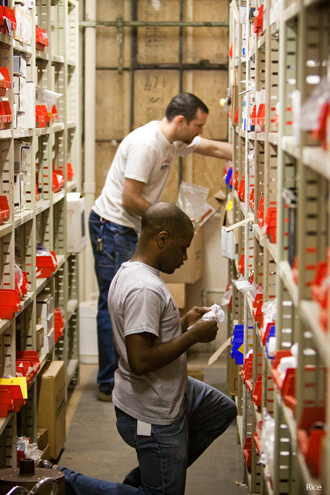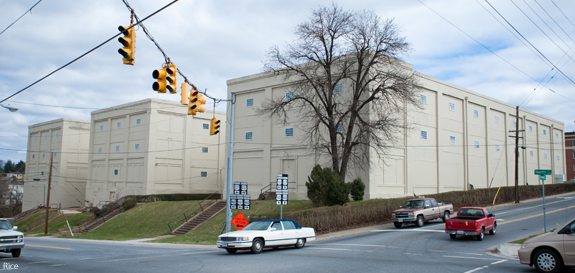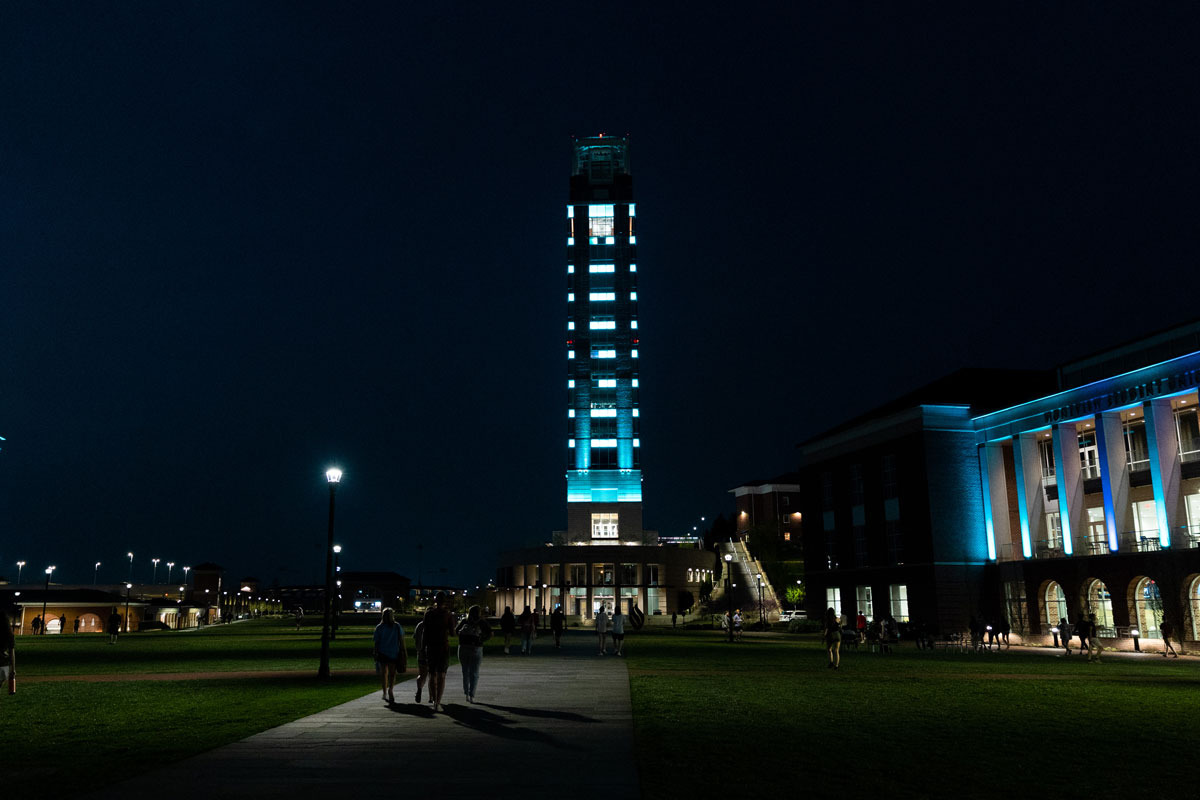Search News Archives
Filter News Articles
Additional Navigation
LU adopts new electronic inventory system
March 16, 2010 : By Office of Communications & Public Engagement
 |
| Phillip Sutton (front) and Colin Werner inventory items at Liberty University’s warehouse on 12th Street in Lynchburg. |
With the recent growth of Liberty University — now close to 12,000 residential students, 2,000 employees and many new and expanded facilities — inventory and storage of university-owned items had become a larger task than ever before.
Earlier this year, Liberty began using TECSYS Elite Warehouse Management Software (WMS) to better keep track of resources and supplies, such as computers, furniture and athletic equipment.
Lee Beaumont, director of Auxiliary Services, said he was in a housing meeting where the staff was discussing ordering more furniture and he asked how much was already in storage.
“Nobody had a clue,” he said. “So we knew we needed to do something there.”
He realized the need to implement a different system of where and how the university stored its assets. He turned to John Gauger, a business analyst for LU’s IT Development, and Scott Small, the director of LU’s supply chain management system. Gauger sought out an electronic solution while Small worked on revitalizing and emptying a warehouse on 12th Street in downtown Lynchburg that Liberty acquired in November 2007.
Inventory troubles are not specific to Liberty, Gauger said; it’s an issue many colleges and universities face.
“The models that higher education uses now are a siloed storage — biology keeps their stuff; athletics keeps their stuff,” Gauger said. “The institution never knows what they have.”
With the new system, Liberty has shifted from a traditional method of storage to a more progressive one, where instead of items belonging to departments, everything belongs to the university.
“This is pioneering,” Gauger said. “There are only a handful of universities that are doing this in the nation, and we’re really at the forefront.”
Liberty’s shift to an organized storage and asset management system and becoming “number one” in the industry took less than 12 months, said Beaumont.
The WMS system allows Liberty officials to track items and time, efficiencies that will amount to tens of thousands of dollars in savings a year, and will in turn lead to lower tuition costs, according to Beaumont.
For the 12th Street warehouse, Small and his team were able to recover more than 40,000 square feet of storage space by merely cleaning up and getting rid of unnecessary items. Beaumont said the amount of recovered space translates to about $1.2 million in property value.
The new system has also led to the standardization of certain goods. Instead of using five different types of toilets on campus, for example, there will only be one — which will cut down on training time for installation and the amount of supplies that have to be stored for any given period.
Items that are no longer used by the university are “phased out” or donated.
“We supplied three containers of old desks, furniture and old tabletops out of Reber-Thomas Dining Hall that were sent overseas to an orphanage in Jamaica and also an orphanage in Guatemala,” said Small.

Liberty renovated the exterior of a warehouse at 12th and Campbell Streets in downtown Lynchburg.
- Liberty’s use of WMS was featured recently on MarketWatch. You can read the story here.


